![]()
![]()
![]()
Use LEFT and RIGHT arrow keys to navigate between flashcards;
Use UP and DOWN arrow keys to flip the card;
H to show hint;
A reads text to speech;
192 Cards in this Set
- Front
- Back
- 3rd side (hint)
|
_____________ studies the structure of body parts and their relationship to one another.
|
Anatomy
|
p. 2
|
|
|
__________ deals with the function of the body (i.e. how the body parts work and carry out their life-sustaining activities).
|
Physiology
|
p. 2
|
|
|
__________ anatomy or _________ anatomy is the study of large body structures visible to the naked eye.
|
Gross; macroscopic
|
p. 2
|
|
|
__________ anatomy deals with structures too small to be seen with the naked eye.
|
Microscopic
|
p. 2
|
|
|
In _________ anatomy, all the structures in a particular area of the body are examined at the same time.
|
regional
|
p. 2
|
|
|
In __________ anatomy, body structure is studied system by system.
|
systemic
|
p. 2
|
|
|
__________ anatomy is the study of internal structures as they relate to the overlying skin surface.
|
Surface
|
p. 2
|
|
|
What is the level of structural organization that contains the smallest unit of life?
|
Cellular Level
|
p. 3
|
|
|
What is the level of structural organization that contains groups of similar cells that have a common function?
|
Tissue Level
|
p. 3
|
|
|
What are the four basic tissue types found in the human body?
|
Epithelium
Muscle Connective Nervous |
p. 3
|
|
|
What type of tissue covers the body surface and lines its cavities?
|
Epithelium
|
p. 3
|
|
|
What type of tissue provides movement?
|
Muscle
|
p. 3
|
|
|
What type of tissue supports and protects body organs?
|
Connective
|
p. 3
|
|
|
What type of tissue provides a means of rapid internal communication by transporting electrical impulses?
|
Nervous
|
p. 3
|
|
|
An __________ is a discrete structure composed of at least two tissue types that perform a specific function for the body.
|
organ
|
p. 3
|
|
|
Organs that work together to accomplish a common purpose make up an __________.
|
organ system
|
p. 3
|
|
|
What is the highest level of structural organization?
|
Organismal Level
|
p. 4
|
|
|
On a cellular level, the muscle cell's ability to move by shortening is called __________.
|
contractility
|
p. 5
|
|
|
__________ or __________ is the ability to sense changes (stimuli) in the environment and then respond to it.
|
Responsiveness; irritability
|
p. 5
|
|
|
__________ is the breaking down of ingested foodstuffs to simple molecules that can be absorbed into the blood.
|
Digestion
|
p. 5
|
|
|
What are the two types of metabolism?
|
Catabolism
Anabolism |
pp. 6-7
|
|
|
__________ is the synthesizing of complex cellular structures from simpler substances.
|
Anabolism
|
pp. 6-7
|
|
|
__________ is the breaking down of substances into their simpler building blocks
|
Catabolism
|
p. 6
|
|
|
__________ is the process of removing wastes from the body.
|
Excretion
|
p. 8
|
|
|
__________ can occur at the cellular and organismal levels.
|
Reproduction
|
p. 8
|
|
|
In __________ reproduction, the original cell divides, producing two identical daughter cells.
|
cellular
|
p. 8
|
|
|
__________ is an increase in the size of a part of the body or the organism.
|
Growth
|
p. 8
|
|
|
__________ is the term used to describe the body's ability to maintain relatively stable internal conditions even though the outside world changes continuously.
|
Homeostasis
|
p. 9
|
|
|
All homeostatic control mechanisms have at least three interdependent components called __________, __________, __________.
|
receptor; control center; effector
|
pp. 9-10
|
|
|
In homeostatic control, the sensor that monitors the environment and responds to changes is called a __________.
|
receptor
|
p. 9
|
|
|
In homeostasis, the factor or event being regulated is called the __________.
|
variable
|
p. 9
|
|
|
The __________ provides the means for the control center's response (output) to the stimulus.
|
effector
|
p. 10
|
|
|
In homeostatic control, the output that shuts off the original stimulus or reduces its intensity is called __________ feedback.
|
negative
|
p. 10
|
|
|
__________ is explainable only in terms of the underlying anatomy.
|
Physiology
|
p. 2
|
|
|
__________ anatomy traces structural changes that occur in the body throughout the lifespan.
|
Developmental
|
p. 2
|
|
|
__________ is a subdivision of developmental anatomy which deals with developmental changes that occur before birth.
|
Embryology
|
p. 2
|
|
|
__________ anatomy studies structural changes caused by disease.
|
Pathological
|
p. 2
|
|
|
__________ anatomy studies internal structures as visualized by X-ray images or specialized scanning procedures.
|
Radiographic
|
p. 2
|
|
|
In __________, the structure of biological molecules (chemical substances) is investigated.
|
molecular biology
|
p. 2
|
|
|
__________ physiology deals with kidney function and urine production.
|
Renal
|
p. 3
|
|
|
__________ explains the workings of the nervous system.
|
Neurophysiology
|
p. 3
|
|
|
__________ physiology examines the operation of the heart and blood vessels.
|
Cardiovascular
|
p. 3
|
|
|
What is the simplest level of the structural (organization) hierarchy called?
|
Chemical Level
|
p. 3
|
|
|
__________ is a broad term that includes all chemical reactions that occur within the body cells.
|
Metabolism
|
p. 6
|
|
|
__________ accounts for 60-80 percent of body weight.
|
Water
|
p. 8
|
|
|
__________ is the single most abundant chemical substance in the body.
|
Water
|
p. 8
|
|
|
As body temperature drops below __________, metabolic reactions become ___________.
|
37 degrees C (98.6 degree F); slower and slower
|
p. 8
|
|
|
What are the smallest units of living things?
|
Cells
|
p. 3
|
|
|
What are the basic components of microscopic cells?
|
Organelles
|
p. 3
|
|
|
The "reference man" describes a healthy _____ year old male weighing about _____ pounds.
|
22-year-old
155 pounds |
p. 2
|
|
|
The "reference woman" describes a healthy _____ year old female weighing about _____ pounds.
|
22 year old
125 pounds |
p. 2
|
|
|
A subdivision of microscopic anatomy which considers the cells of the body is known as __________.
|
cytology
|
p. 2
|
|
|
__________ is the study of tissues.
|
Histology
|
p. 2
|
|
|
What is the term used to describe the idea that a structure can do depends on its specific form?
|
Principle of complementarity of structure and function
|
p. 3
|
|
|
What are the levels of structural organization, from smallest to largest?
|
Chemical Level
Cellular Level Tissue Level Organ Level Organ System Level Organismal Level |
pp. 3-4
|
|
|
At what structural organization level do extremely complex functions become possible?
|
Organ Level
|
p. 3
|
|
|
Organ systems of the body include: ____________ (11 answers).
|
Cardiovascular
Integumentary Skeletal Muscular Nervous Endocrine Lymphatic Respiratory Digestive Urinary Reproductive |
p. 4
|
|
|
What structural organization level represents the sum total of all structural levels working together to promote life?
|
Organismal Level
|
p. 4
|
|
|
Metabolism is largely regulated by what?
|
Hormones secreted by the endocrine system glands
|
p. 7
|
|
|
With regard to homeostasis, changes in the environment are called __________.
|
stimuli
|
p. 9
|
|
|
In homeostasis, input from the receptor to the control center along the so-called __________.
|
afferent pathway
|
pp. 10-11
|
|
|
The __________ determines the set point (level or range at which a variable is to be maintained), analyzes the input it receives, and then determines the appropriate response or course of action.
|
control center
|
p. 10
|
|
|
Information flows from the control center to the effector along the ________.
|
efferent pathway
|
p. 10
|
|
|
The afferent pathway __________ the control center and the efferent pathway __________ the control center.
|
approaches; exits
|
p. 10
|
|
|
Most homeostatic control mechanisms are __________ feedback mechanisms.
|
negative
|
p. 10
|
|
|
In __________ feedback mechanisms, the result or response enhances the original stimulus so that the activity (output) is accelerated.
|
positive
|
p. 10
|
|
|
Positive feedback mechanisms are also called __________.
|
cascades
|
p. 10
|
|
|
Blood clotting is an example of what type of feedback?
|
Positive
|
p. 10
|
|
|
A disturbance of homeostasis is called __________.
|
homeostatic imbalance
|
p. 11
|
|
|
In the "anatomical position," the body is __________ with feet __________. The palms face __________ with the thumbs pointing __________ from the body.
|
erect; slightly apart; forward; away
|
p. 13
|
|
|
The two fundamental divisions of the body are the __________ and the __________ parts.
|
axial; appendicular
|
p. 12
|
|
|
One of the fundamental divisions of the body, the __________ part includes the head, neck, and trunk.
|
axial
|
p. 12
|
|
|
One of the fundamental divisions of the body, the __________ part includes the limbs.
|
appendicular
|
p. 12
|
|
|
__________ means toward the head end or upper part of a structure or the body; above.
|
Superior
|
p. 13, Table 1.1
|
|
|
__________ means away from the head end or toward the lower part of a structure or the body; below.
|
Inferior
|
p. 13, Table 1.1
|
|
|
In directional terms, another name for "superior" is __________.
|
cranial
|
p. 13, Table 1.1
|
|
|
In directional terms, another name for "inferior" is __________.
|
caudal
|
p. 13, Table 1.1
|
|
|
__________ means toward or at the front of the body; in front of.
|
Ventral
|
p. 13, Table 1.1
|
|
|
In humans, another name for "ventral" is __________.
|
anterior
|
p. 13, Table 1.1
|
|
|
In humans, another name for "dorsal" is __________.
|
posterior
|
p. 13, Table 1.1
|
|
|
__________ means toward or at the back of the body; behind.
|
Dorsal
|
p. 13, Table 1.1
|
|
|
__________ means toward or at the midline of the body: on the inner side of.
|
Medial
|
p. 13, Table 1.1
|
|
|
__________ means away from the midline of the body; on the outer side of.
|
Lateral
|
p. 13, Table 1.1
|
|
|
__________ means between a more medial and a more lateral structure.
|
Intermediate
|
p. 13, Table 1.1
|
|
|
__________ means closer to the origin of the body part or the point of attachment of a limb to the body trunk.
|
Proximal
|
p. 13, Table 1.1
|
|
|
__________ means farther from the origin of a body part or the point of attachment of a limb to the body trunk.
|
Distal
|
p. 13, Table 1.1
|
|
|
__________ means toward or at the body surface.
|
Superficial
|
p. 13, Table 1.1
|
|
|
__________ means away from the body surface; more internal.
|
Deep
|
p. 13, Table 1.1
|
|
|
In directional terms, another term for "superficial" is __________.
|
external
|
p. 13, Table 1.1
|
|
|
In directional terms, another term for "deep" is __________.
|
internal
|
p. 13, Table 1.1
|
|

Identify the directional term.
|
Superior
|
p. 13, Table 1.1
|
|
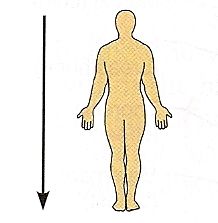
Identify the directional term.
|
Inferior
|
p. 13, Table 1.1
|
|
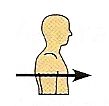
Identify the directional term.
|
Ventral (Anterior)
|
p. 13, Table 1.1
|
|

Identify the directional term.
|
Dorsal (Posterior)
|
p. 13, Table 1.1
|
|

Identify the directional term.
|
Medial
|
p. 13, Table 1.1
|
|
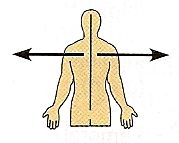
Identify the directional term.
|
Lateral
|
p. 13, Table 1.1
|
|
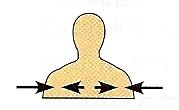
Identify the directional term.
|
Intermediate
|
p. 13, Table 1.1
|
|
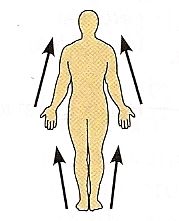
Identify the directional term.
|
Proximal
|
p. 13, Table 1.1
|
|
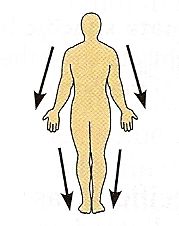
Identify the directional term.
|
Distal
|
p. 13, Table 1.1
|
|
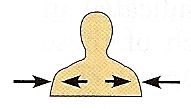
Identify the directional term.
|
Superficial (External)
|
p. 13, Table 1.1
|
|
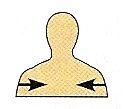
Identify the directional term.
|
Deep (Internal)
|
p. 13, Table 1.1
|
|
|
The nose is found in the __________ region.
|
nasal
|
p. 14, Figure 1.7
|
|
|
The mouth is found in the __________ region.
|
oral
|
p. 14, Figure 1.7
|
|
|
The neck is found in the __________ region.
|
cervical
|
p. 14, Figure 1.7
|
|
|
The point of the shoulder is found in the __________ region.
|
acromial
|
p. 14, Figure 1.7
|
|
|
The armpit is found in the __________ region.
|
axillary
|
p. 14, Figure 1.7
|
|
|
The abdomen is found in the __________ region.
|
abdominal
|
p. 14, Figure 1.7
|
|
|
The arm is found in the __________ region.
|
brachial
|
p. 14, Figure 1.7
|
|
|
The front of the elbow is found in the __________ region.
|
antecubital
|
p. 14, Figure 1.7
|
|
|
The pelvis is found in the __________ region.
|
pelvic
|
p. 14, Figure 1.7
|
|
|
The wrist is found in the __________ region.
|
carpal
|
p. 14, Figure 1.7
|
|
|
The thumb is found in the __________ region.
|
pollex
|
p. 14, Figure 1.7
|
|
|
The palms are found in the __________ region.
|
palmar
|
p. 14, Figure 1.7
|
|
|
The fingers are found in the __________ region.
|
digital
|
p. 14, Figure 1.7
|
|
|
The genitals are found in the __________ region.
|
pubic
|
p. 14, Figure 1.7
|
|
|
The anterior knee is found in the __________ region.
|
patellar
|
p. 14, Figure 1.7
|
|
|
The leg is found in the __________ region.
|
crural
|
p. 14, Figure 1.7
|
|
|
The foot is found in the __________ region.
|
pedal
|
p. 14, Figure 1.7
|
|
|
The ankle is found in the __________ region.
|
tarsal
|
p. 14, Figure 1.7
|
|
|
The toes are found in the __________ region.
|
digital
|
p. 14, Figure 1.7
|
|
|
The forehead is found in the __________ region.
|
frontal
|
p. 14, Figure 1.7
|
|
|
The eye is found in the __________ region.
|
orbital
|
p. 14, Figure 1.7
|
|
|
The cheek is found in the __________ region.
|
buccal
|
p. 14, Figure 1.7
|
|
|
The chin is found in the __________ region.
|
mental
|
p. 14, Figure 1.7
|
|
|
The breastbone is found in the __________ region.
|
sternal
|
p. 14, Figure 1.7
|
|
|
The chest is found in the __________ region.
|
thoracic
|
p. 14, Figure 1.7
|
|
|
The breast is found in the __________ region.
|
mammary
|
p. 14, Figure 1.7
|
|
|
The naval is found in the __________ region.
|
umbilical
|
p. 14, Figure 1.7
|
|
|
The hip is found in the __________ region.
|
coxal
|
p. 14, Figure 1.7
|
|
|
The groin is found in the __________ region.
|
inguinal
|
p. 14, Figure 1.7
|
|
|
The thigh is found in the __________ region.
|
femoral
|
p. 14, Figure 1.7
|
|
|
The side of the leg is found in the __________ region.
|
fibular or peroneal
|
p. 14, Figure 1.7
|
|
|
The great toe is found in the __________ region.
|
hallux
|
p. 14, Figure 1.7
|
|
|
The head is found in the __________ region.
|
cephalic
|
p. 14, Figure 1.7
|
|
|
The hand is found in the __________ region.
|
manus
|
p. 14, Figure 1.7
|
|
|
The ear is found in the __________ region.
|
otic
|
p. 14, Figure 1.7
|
|
|
The back of the head to the base of the skull is found in the __________ region.
|
occipital
|
p. 14, Figure 1.7
|
|
|
The spinal column is found in the __________ region.
|
vertebral
|
p. 14, Figure 1.7
|
|
|
The shoulder blade is found in the __________ region.
|
scapular
|
p. 14, Figure 1.7
|
|
|
The back is found in the __________ region.
|
dorsum or dorsal
|
p. 14, Figure 1.7
|
|
|
The elbow is found in the __________ region.
|
olecranal
|
p. 14, Figure 1.7
|
|
|
The loin (lower back) is found in the __________ region.
|
lumbar
|
p. 14, Figure 1.7
|
|
|
The area between the hips (on the back) is found in the __________ region.
|
sacral
|
p. 14, Figure 1.7
|
|
|
The buttock is found in the __________ region.
|
gluteal
|
p. 14, Figure 1.7
|
|
|
The area between the anus and the external genitalia is found in the __________ region.
|
perineal
|
p. 14, Figure 1.7
|
|
|
The back of the knee is found in the __________ region.
|
popliteal
|
p. 14, Figure 1.7
|
|
|
The calf is found in the __________ region.
|
sural
|
p. 14, Figure 1.7
|
|
|
The heel is found in the __________ region.
|
calcaneal
|
p. 14, Figure 1.7
|
|
|
The sole of the foot is found in the __________ region.
|
plantar
|
p. 14, Figure 1.7
|
|
|
In anatomical terms, the __________ plane is a vertical plane that divides the body into right and left parts.
|
sagittal
|
p. 15
|
|
|
In anatomical terms, the sagittal plane that lies exactly in the midline is known as the __________ plane or the __________ plane.
|
median; midsagittal
|
p. 15
|
|
|
In anatomical terms, the __________ plane is a vertical plane that divides the body into anterior and posterior parts.
|
frontal
|
p. 15
|
|
|
In anatomical terms, a frontal plane is also known as a __________ plane.
|
coronal
|
p. 15
|
|
|
In anatomical terms, a sagittal plane which is offset from the midline is known as a __________ plane.
|
parasagittal
|
p. 15
|
|
|
In anatomical terms, the __________ plane runs horizontally from right to left, dividing the body into anterior and posterior parts.
|
transverse or horizontal
|
p. 15
|
|
|
In anatomical terms, a transverse section is also called a __________.
|
cross section
|
p. 15
|
|
|
In anatomical terms, cuts made diagonally between horizontal and vertical planes are called __________.
|
oblique sections
|
p. 15
|
|
|
The dorsal body cavity has two subdivisions: The __________ cavity and the __________ cavity.
|
cranial; vertebral or spinal
|
p. 15
|
|
|
The cranial cavity encases the __________.
|
brain
|
p. 15
|
|
|
The vertebral or spinal cavity runs within the bony __________and encloses the __________.
|
vertebral column; spinal cord
|
p. 15
|
|
|
What are the two internal body cavities called?
|
Dorsal Body Cavity
Ventral Body Cavity |
p. 15
|
|
|
What are the two major subdivisions of the ventral body cavity?
|
Thoracic Cavity
Abdominopelvic Cavity |
p. 15
|
|
|
The ventral body cavity houses internal organs collectively called the __________.
|
viscera or visceral organs
|
p. 15
|
|
|
The thoracic cavity is surrounded by the __________.
|
ribs and muscles of the chest.
|
p. 15
|
|
|
The thoracic cavity is subdivided into the __________ cavities, each enveloping a lung, and the medial mediastinum.
|
lateral pleural
|
p. 15
|
|
|
The mediastinum contains the __________ cavity, which encloses the heart and surrounds the esophagus, trachea, and other thoracic organs.
|
pericardial
|
p. 15
|
|
|
The thoracic cavity is separated from the abdominopelvic cavity by the __________.
|
diaphragm
|
p. 15
|
|
|
Although not physically separated by a muscular or membrane wall, the abdominopelvic cavity has two parts: The __________ cavity and the __________ cavity.
|
abdominal; pelvic
|
p. 15
|
|
|
The pelvic cavity lies in the bony pelvis and contains the: __________ (3 answers).
|
Bladder
Some Reproductive Organs Rectum |
p. 15
|
|
|
The abdominal cavity contains the: __________ (5 answers).
|
Stomach
Intestines Spleen Liver Other Organs |
p. 15
|
|
|
"Survival needs" include what five items?
|
Nutrients
Oxygen Water Normal Body Temperature Atmospheric Pressure |
p. 8
|
|
|
The walls of the ventral body cavity and the outer surface of the organs it contains are covered by a thin, double-layered membrane called the __________ or __________.
|
serosa; serous membrane
|
p. 17
|
|
|
The part of the serous membrane lining the cavity walls is called the __________.
|
parietal serosa
|
p. 17
|
|
|
The part of the serous membrane that covers the organs is called the __________.
|
visceral serosa
|
p. 17
|
|
|
The serous membranes are separated by __________, which is secreted by both membranes.
|
serous fluid
|
p. 17
|
|
|
The serous membrane which lines the pericardial cavity is called the __________.
|
parietal pericardium
|
p. 18
|
|
|
The serous membrane which covers the heart is called the __________.
|
visceral pericardium
|
p. 18
|
|
|
The serous membrane which lines the walls of the thoracic cavity is called the __________.
|
parietal pleura
|
p. 18
|
|
|
The serous membrane which covers the lungs is called the __________.
|
visceral pleura
|
p. 18
|
|
|
The serous membrane which lines the walls of the abdominopelvic cavity is called the __________.
|
parietal peritoneum
|
p. 18
|
|
|
The serous membrane which covers most of the organs within the abdominopelvic cavity is called the __________.
|
visceral peritoneum
|
p. 18
|
|
|
Of the nine abdominopelvic regions, the __________ region is the centermost region.
|
umbilical
|
p. 18
|
|
|
Of the nine abdominopelvic regions, the __________ region is located superior to the umbilical region.
|
epigastric
|
p. 18
|
|
|
Of the nine abdominopelvic regions, the __________ region is located inferior to the umbilical region.
|
hypogastric (pubic)
|
p. 18
|
|
|
Of the nine abdominopelvic regions, the two (right and left) __________ regions are located lateral to the hypogastric region.
|
iliac or inguinal
|
p. 18
|
|
|
Of the nine abdominopelvic regions, the two (right and left) __________ regions are located lateral to the umbilical region.
|
lumbar regions
|
p. 18
|
|
|
Of the nine abdominopelvic regions, the two (right and left) __________ regions are located lateral to the epigastric region.
|
hypochondriac
|
p. 18
|
|
|
The __________ cavity contains the teeth and tongue.
|
oral
|
p. 19
|
|
|
The __________ cavity is located within and posterior to the nose.
|
nasal
|
p. 19
|
|
|
The __________ cavities house the eyes.
|
orbital
|
p. 19
|
|
|
The __________ cavities lie just medial to the eardrums and contain tiny bones that transmit sound vibrations to the hearing receptors in the inner ears.
|
middle ear
|
p. 19
|
|
|
The __________ cavities are joint cavities and are enclosed within fibrous capsules that surround freely movable joints of the body (such as the elbow and knee joints).
|
synovial
|
p. 19
|

